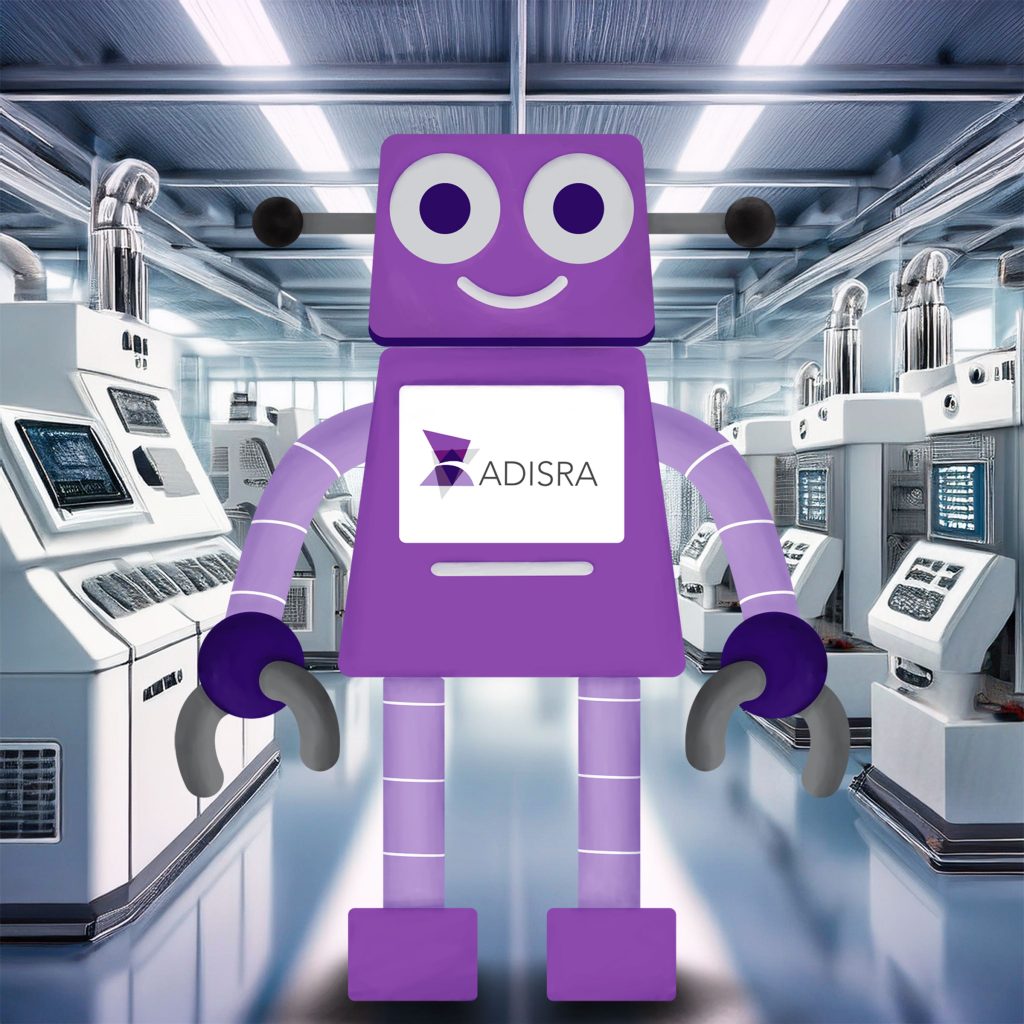
Automation has been a part of human history since the beginning of time. Creating mechanisms to perform specific, predetermined tasks has always been rooted in the human desire to focus on more meaningful pursuits. The term “automation” originates from the Ancient Greek word automaton (αὐτόματον), meaning “acting of one’s own will.” In Homer’s works from the eighth century BCE, we find references to automation: Hephaestus, the Greek god of smithing and craft used automatic bellows to execute simple, repetitive labor, and in Homer’s epic work, he describes self-driving wheeled tripods that carry nectar and ambrosia like today’s self-driving cars.
The spirit of innovation is captured beautifully in the classic Schoolhouse Rock lyrics:
“Mother Necessity
With her good intentions,
Where would this country be
Without her inventions?
Oh, things were rotten in the land of cotton
Until Whitney made the cotton gin.
Now old times there will soon be forgotten
For it did the work of a hundred men.”
The guiding principle has remained consistent as technology has evolved throughout history: to simplify human interaction with machines and make tasks more intuitive and efficient.
As automation advances, so do the methods we use to design and interact with systems. Traditional approaches often demanded extensive programming expertise, lengthy development processes, and rigid configurations that were challenging to adjust post-deployment. Development environments like Human Machine Interfaces (HMI) and Supervisory Control and Data Acquisition (SCADA) systems emerged to address these limitations, simplifying the complexities of programming applications to interface with machinery. Tools like ADISRA SmartView have further advanced this concept by introducing features that enable developers to create flexible, low-code template-based HMI/SCADA applications that can be configured dynamically at runtime, offering unparalleled adaptability and efficiency.
Flexibility and adaptability are no longer optional in industrial automation — they are essential. Industries require solutions that enable teams to make real-time adjustments without the need for deep technical expertise or time-consuming software changes. Low-code templates with runtime configuration in HMI/SCADA systems effectively address this need. Before exploring how ADISRA SmartView leverages these low-code templates for runtime configuration, let us first define a low-code template.
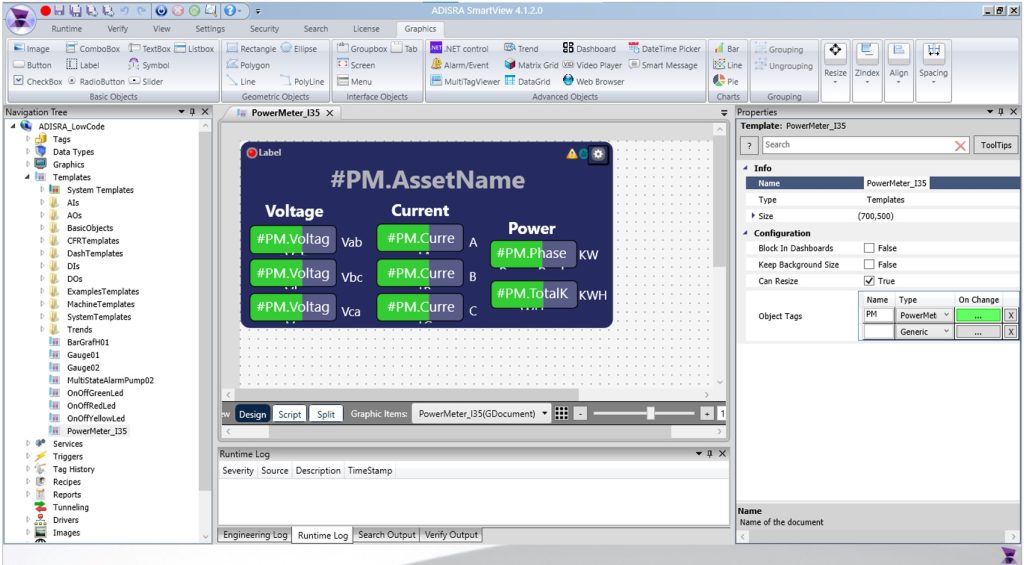
What is a Template?
A template is a pre-designed structure serving a customizable foundation for a specific purpose. It provides a framework tailored to meet individual needs while maintaining a consistent look and feel. Templates are versatile and can be used for various applications, from brochures to website pages. For example, a website template might include a predefined header, footer, navigation menu, and content area. Designers can then personalize the content area with text, images, and other elements while preserving the overall framework of the template.
Templates, much like automation, have a long history. The ancient Egyptians used templates for creating hieroglyphs and artwork, demonstrating their early adoption of standardized designs. In the realm of software, templates gained prominence with the development of the Standard Template Library (STL), primarily attributed to Alexander Stepanov at General Electric Research. This innovation built upon generic programming principles, which David Musser initially championed in 1971. Over time, templates have continued to evolve, leading to the advent of low-code templates that simplify customization and development in modern applications.

What is a Low-code Template?
Forrester analysts Clay Richardson and John Rymer first introduced the term “low-code.” They defined low-code as the use of visual, agile, and rule-based development tools combined with pre-configured elements to expedite app delivery and prototyping. Low-code is a contemporary application development approach that significantly reduces the need for traditional hand-coding by leveraging intuitive visual interfaces, prebuilt components, and drag-and-drop functionality.
Low-code templates are predefined and preconstructed components that serve as a foundational framework, enabling users to swiftly generate and tailor Human Machine Interface (HMI) applications to meet their industrial needs. Rather than coding from scratch, these platforms enable you to piece together code blocks, akin to digitally assembling a structure using interlocking building blocks. Empowering users to accelerate and standardize HMI application development, our low-code template is the key to unparalleled efficiency in the developmental journey.
Low-code empowers developers with a flexible visual environment for creating simple to complex applications through a graphical interface. By utilizing advanced tools such as drag-and-drop modelers, prebuilt templates, and intuitive user interfaces, low-code technology enables developers to design and deploy applications more rapidly. This development speed allows organizations to scale efficiently, increase profitability, and achieve superior returns.
ADISRA offers a Low-Code Template specifically designed for building HMI applications. This template supports functionalities such as alarms, recipes, reports, rule-based systems, drivers, database connectivity, and more—without requiring direct use of the ADISRA SmartView development environment. The template itself is created within ADISRA SmartView, which provides a comprehensive set of tools for OEMs, system integrators, and users to build and deploy their own low-code templates to their customers.
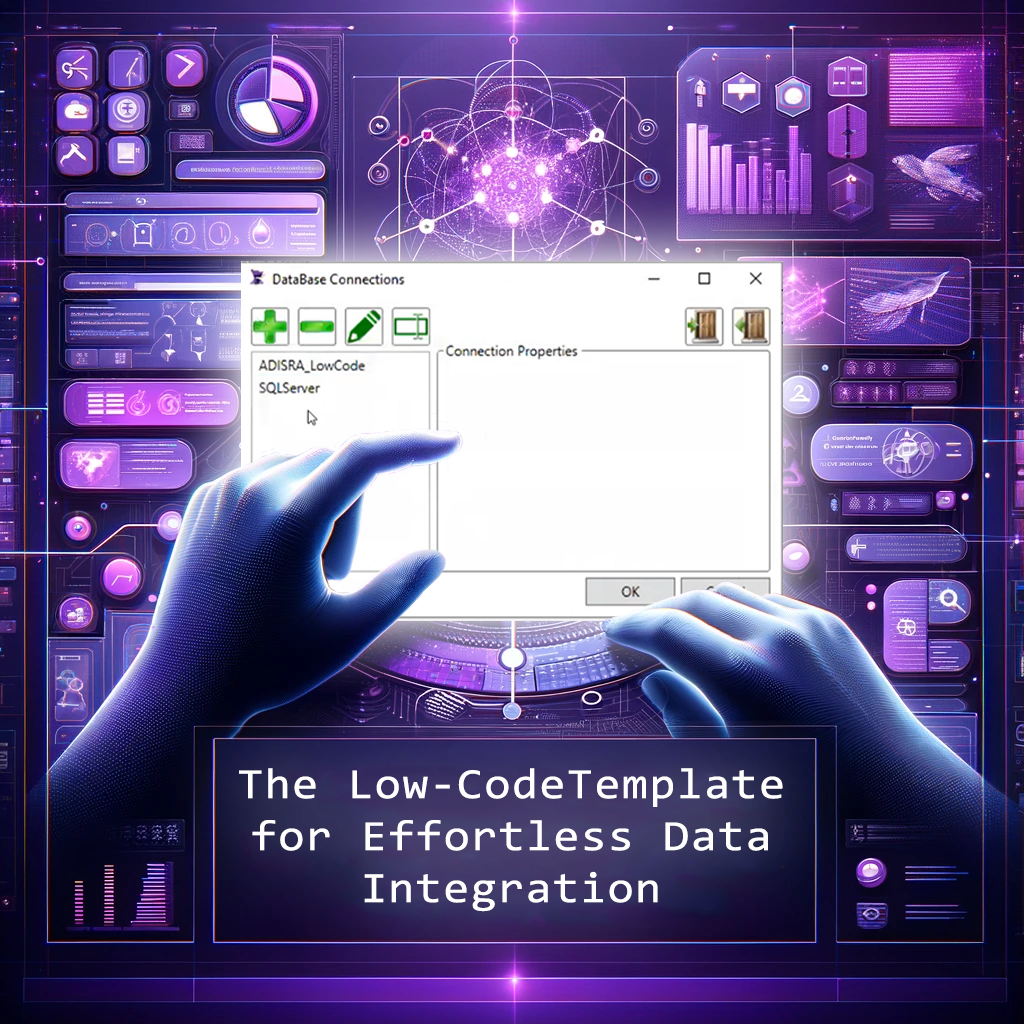
Creating Low-code Templates in ADISRA SmartView.
Templates in ADISRA SmartView enable users to design dashboards, screens, and objects with ease. Additionally, ADISRA SmartView provides a library of pre-built templates that users can readily use. These pre-built templates are fully editable, allowing users to customize them to meet their specific needs. Users also have the flexibility to create their own templates and save them in a personal library for future use.
ADISRA Templates offer a range of powerful features, including:
Encapsulation: Scripts and variables can be fully encapsulated within the template, ensuring a self-contained design.
Extensibility: Templates are highly flexible, making it easy to reuse and modify them to create new templates with minimal effort.
Reusability: Templates can be reused and easily shared with others using ADISRA SmartView, streamlining collaboration and efficiency.
Security: Templates are designed with protection mechanisms to prevent accidental deletion or damage.
Web Compatibility: Templates can be saved in HTML5 format, allowing them to be displayed seamlessly on the web.
Like other features in ADISRA SmartView, these templates can be configured at runtime without requiring an ADISRA SmartView Development license. Users can leverage a wide range of capabilities to create specialized low-code templates, including logging data to standard SQL databases, designing intuitive user interfaces and dashboards, trending data points and creating trend groups, configuring alarms with email notifications, managing drivers, and much more.
The features of low-code templates can be distilled into six core components: connecting to the data source, visualizing the data, analyzing the data, setting up alarms, trending the data, and storing the data.
Low-code templates empower users to adjust interfaces, workflows, and settings at runtime without accessing the underlying HMI/SCADA software. With drag-and-drop tools, pre-built components, and user-friendly interfaces, these templates make it easy for anyone—from operators to managers—to modify the system on the fly with the right security privileges.
By enabling application design without extensive coding, low-code templates significantly reduce development time, enhance accuracy, and make customization more accessible to all users.
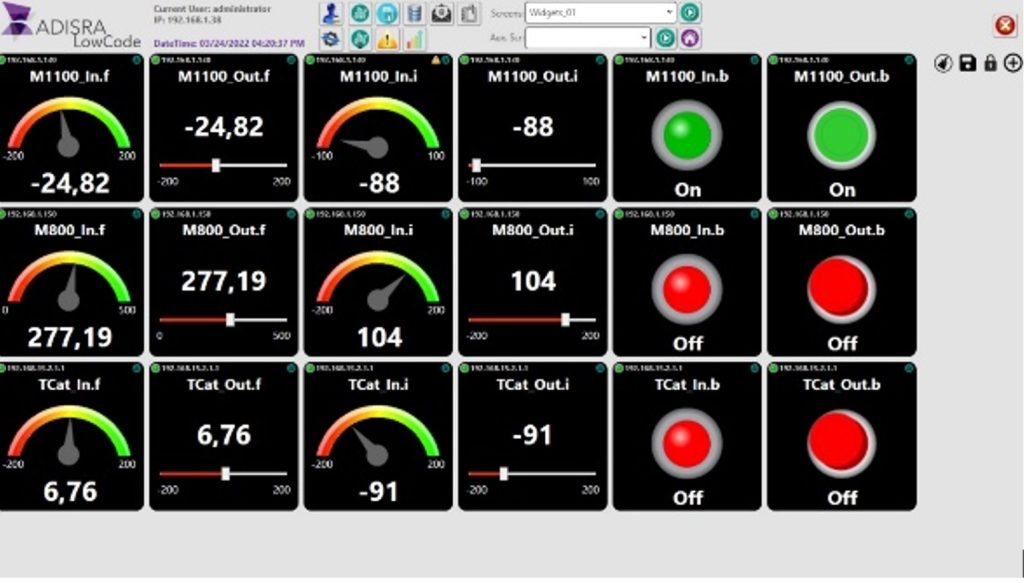
Who Would Want This Feature?
For Machine Builders: Developing a low-code template that enables customers to configure and customize their machines for their specific environments effortlessly streamlines development for both the vendor and the user. It ensures the HMI software can adapt to evolving requirements while simplifying deployment and reducing project timelines.
System integrators can benefit from low-code templates with run-time configurability by accelerating project delivery through reduced development time, pre-built components, and real-time adjustments. These templates lower engineering costs, minimize site visits, and enable remote updates, improving cost efficiency and customer satisfaction. Integrators can adapt to evolving client needs with reusable, scalable solutions while maintaining standardization across projects. The ability to integrate seamlessly with various devices and protocols simplifies deployment, while real-time testing and fewer coding errors reduce risk.
End-users in industrial settings, including operators and technicians, benefit from low-code templates by allowing quick adjustments during production to maintain efficiency and address real-time challenges. Conversely, managers require flexibility to modify workflows or settings to adapt to shifting demands, ensuring that operations remain aligned with business goals and production schedules.
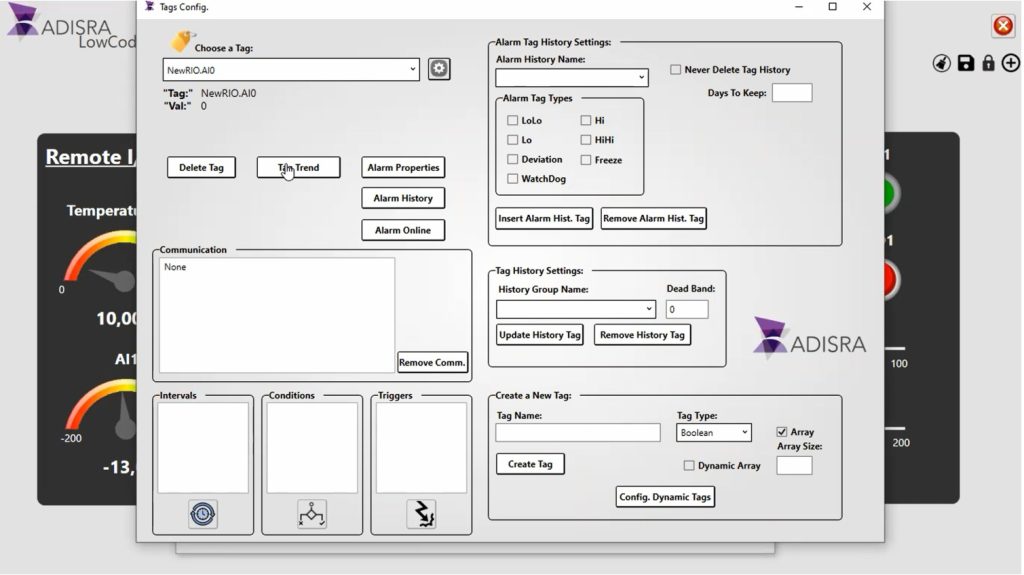
Leverage the potential of a low-code template to empower your business with enhanced productivity and agility by delivering:

Efficiency: Discover efficiency with our Low-Code Template. Using a simple, rapid deployment environment to create custom Human Machine Interfaces with intuitive drag-and-drop interfaces and pre-built components, achieving your business objectives has never been easier.

Cost Savings: Unlock significant cost savings with low-code technology. By accelerating the Human Machine Interface development process, low-code not only reduces development costs but also offers a myriad of additional benefits.

Higher Productivity: Experience heightened productivity with low-code development, where time catalyzes innovation. Accelerated project timelines mean businesses can innovate swiftly, yielding superior returns on investment with every endeavor.

Flexibility Unleash unparalleled flexibility with Low-Code Template, empowering business users to craft tailored Human Machine Interface applications that excel at accomplishing specific tasks.
Why Is This Feature Valuable?
This feature brings significant value by offering unmatched flexibility, allowing real-time adaptations to operational needs without the delays or downtime associated with reprogramming. Its ease of use empowers non-technical staff to make adjustments independently, reducing reliance on advanced technical skills and streamlining processes. With the ability to implement changes immediately, the feature enables faster problem-solving, minimizing disruptions, and maximizing uptime and efficiency. Additionally, it drives cost savings by eliminating repeated development expenses and reducing the need for support teams for minor adjustments. By giving users the control to customize their environment, the feature delivers an enhanced user experience, boosting satisfaction and productivity across the board.
Transform your operations with a cutting-edge HMI/SCADA system. Our low-code templates empower you to adapt in real-time, reduce costs, and gain a competitive edge. Experience the difference—contact us for a demo of our low-code template, or download ADISRA SmartView here to start building your own low-code template.
Conclusion
Low-code, run-time configurable templates represent a transformative leap in industrial automation. By streamlining development, empowering users, and reducing the barriers to customization, these templates provide a powerful solution for modern industrial applications. Whether you are a machine builder, system integrator, or end-user, the ability to adapt and optimize processes in real time without extensive coding expertise is a game-changer.
ADISRA SmartView offers an intuitive platform for creating and deploying low-code templates that address the complex needs of today’s industries. With features that enable encapsulation, extensibility, reusability, and security, ADISRA SmartView templates allow you to harness the full potential of automation while staying flexible and responsive to change.
Take the next step in your automation journey. Simplify your operations, enhance efficiency, and unlock new possibilities with low-code templates. Contact us today for a personalized demo or download ADISRA SmartView to experience firsthand ADISRA SmartView.
